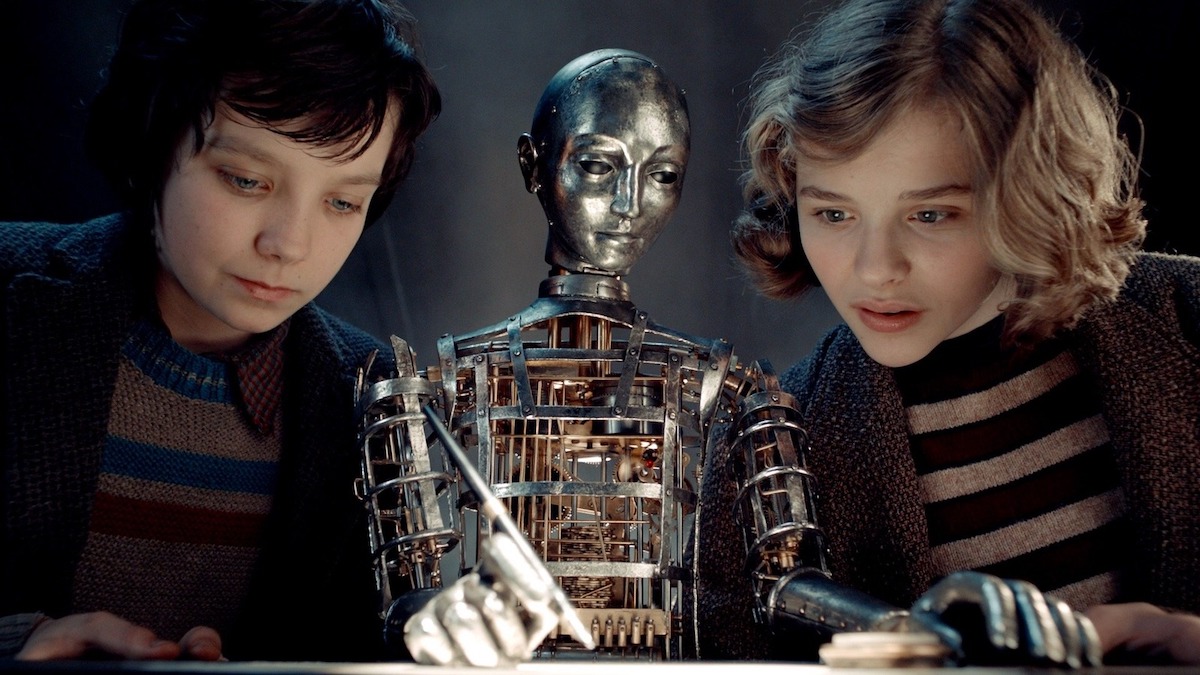Martin Scorsese turned 80 last month and he deserves celebration. He’s one of perhaps five directors in Hollywood who is respected as a master of the cinematic art, and the one most closely identified with the art itself. Perhaps this is because he was unpopular until his Social Security years and his prestige was something of a secret; perhaps because he has worked more than any other artist to preserve films and has often talked about his love of various important movies.
Scorsese is not a family movie director. Primarily, he’s associated with stories about agonizing manliness, his protagonists often, perhaps most of the time, criminals or madmen. He’s R-rated, to put it briefly. This has limited in very important way his influence over the American public, which is rarely in the mood for sordid spectacles, however intense the moral scrutiny animating the artist or however crafty the work of art.
But there are moments when the artist’s love of beauty, which I’m tempted to say is natural, is confirmed by abandoning anything sordid, turning instead to the tender part of life. Scorsese achieved this in Hugo (2011), a children’s story, a movie for the holiday season (it debuted Thanksgiving week), which earned 11 Oscar nominations and won five especially connected with cinematic beauty, two for sound, three visual: for the effects, the art direction, and the big prize—cinematography. It was also one of Scorsese’s more popular movies, earning almost $200 million, though it lost money, given its blockbuster budget.
Hugo, adapted from a children’s book, is a story about how art and technology form orphan Hugo Cabret’s character in Paris in the 1930s and therefore somehow proves a defense of the cinematic art that defined the 20th century. Hugo, played by Asa Butterfield, is a teenager living in a Paris train station unbeknownst to the world—he keeps all the clocks running so everyone can get on with their busy days. He steals pastries to fend off hunger and broken toys to get spare parts for a complicated mechanism—an automaton, the only thing he has left from his dead father, who worked in a museum and taught him the skills for understanding and repairing such mechanical devices.
His father’s sudden death left Hugo without a future and without any chance at self-understanding. His uncle, a drunkard as rough as the father had been gentle, brought him to the train station where he works and abandoned him to this invisible work. The boy thus turns to the past—he believes that fixing the automaton would reveal something his father meant for him to know. There is nothing to be done for the dead father—human beings cannot be fixed like technology; but on the other hand, technology seems inhuman and it’s not clear why anyone should be attached to a mechanism, except perhaps out of sentimentality. Hugo is stuck with an extreme version of our common problem—the work we do and that we may be very good at does not seem to say anything about what’s ultimately good for us as human beings.
The movie is as concerned with the past as the boy is. Scorsese suggests that cinema somehow is about re-creating the past: Hugo takes place in the Gare Montparnasse, a beautiful 19th century building torn down in the ’60s to put up an awful black tower that still disfigures that neighborhood. But in the movies the disfigurement need not occur and, on the other hand, the images of the building can be animated and thus enchant us with the promise of restoring beauty.
Something less dreary than reality might be the key both to personal insight and civilizational continuity. Ultimately, the opposition is between beauty and war. The boy’s persecutor is a station policeman, a crippled veteran with a bad prosthetic for his leg, whose experience seems to have made him as cruel as a mechanism. The movie’s open secret is its praise of cinematic pioneer Georges Meliès, played by Ben Kingsley in an Oscar-worthy performance. Meliès also attributes the collapse of his beautiful visions on film to the Great War, which took all hope from people and made their lives too ugly for dreams. Through the story, Scorsese can both rescue Meliès from his fate and somehow help the young audience avoid the dreariness of life without art—they can become something like apprentices to Meliès, as does Hugo, and take their part in preserving the cinematic tradition.
The movie has this remarkable ambition but also the failures one has come to expect in a children’s story—a foolish ignorance of adults. The two brothers Cabret, Hugo’s father, played by the beautiful and soft-voiced Jude Law, and the uncle, played by Ray Winstone, a large, ugly presence, might as well be Tolkien’s elves and dwarves, but they have a combined five minutes of screen time in a two-hour movie. The class difference and the difference between delicate art and industrial technology could have made the movie much more intelligent and attracted the audience by showing them how Hugo grows up in the station. Instead, Scorsese wastes his actors and makes it much harder for the audience to understand what concerns him.
A similar writing problem plagues the boy’s character—Hugo should be a practiced thief and know his way around the station easily. But for the sake of sentimentality, the story has him doe-eyed, fragile, and inept in almost every aspect of the story. The story seems to speak to a certain pathology of parents nowadays, a desire to have the child be both omnipotent and morally pure. Hugo must be above reproach while living in dirt, but also must overcome his situation and reach a happy end, and also do it largely without guidance. This is madness, however popular.
Yet these are problems people are likelier to ignore or even enjoy during the holiday season—innocence is at a premium. So also the rendering of Paris as thoroughly English as the cast can make it, from accents to literary references. The old aristocratic world of Europe is somehow resurrected in a dim but recognizable fashion, its charms put to good use to show audiences that the newest technology, 3-D, which makes movies look like computer games, is part of a tradition of wonderful devices that goes back more than a century, to the wondrous fantasies of a Meliès, and is supposed to give emotional power to our storytelling, that we may again pay attention to the drama of the human soul and imagination, of education, of humanity, which the boy Hugo must to some extent enact. To the extent that it’s a family movie, it’s especially for fathers who want to tell their sons about the past, about the way they themselves grew up and were charmed by our technology. So watch Hugo again and enjoy its fairy tale attempt to turn technology into something only the mechanism of the motion picture camera can make possible—a tradition of wonder.

